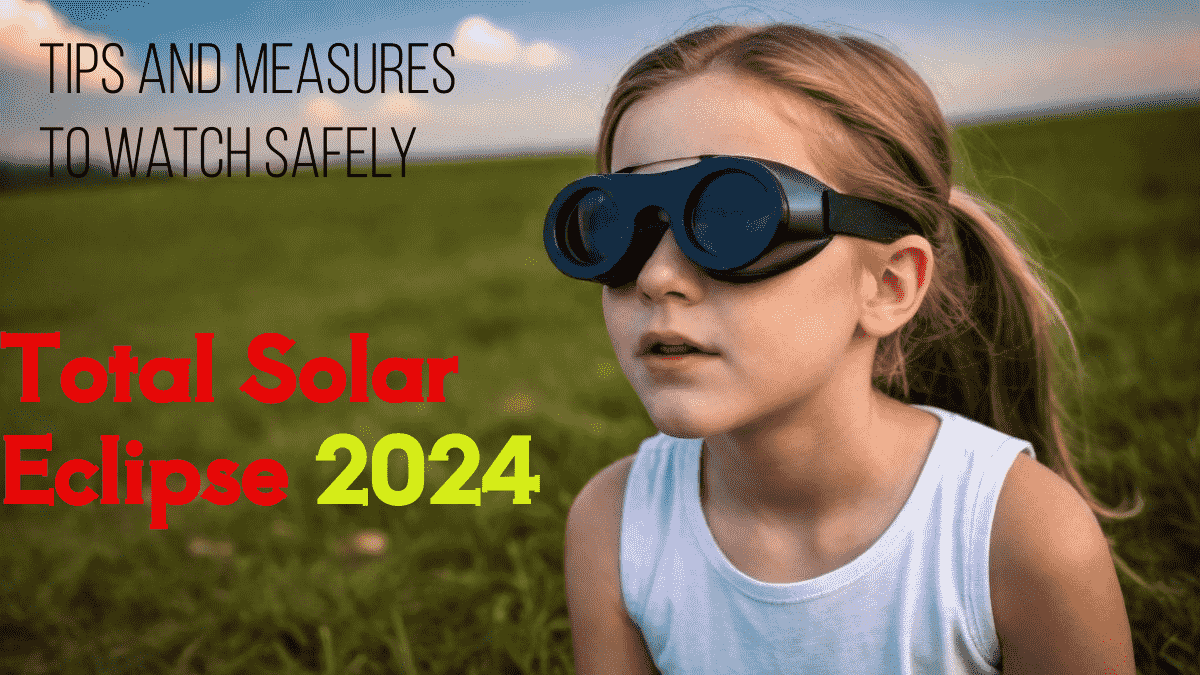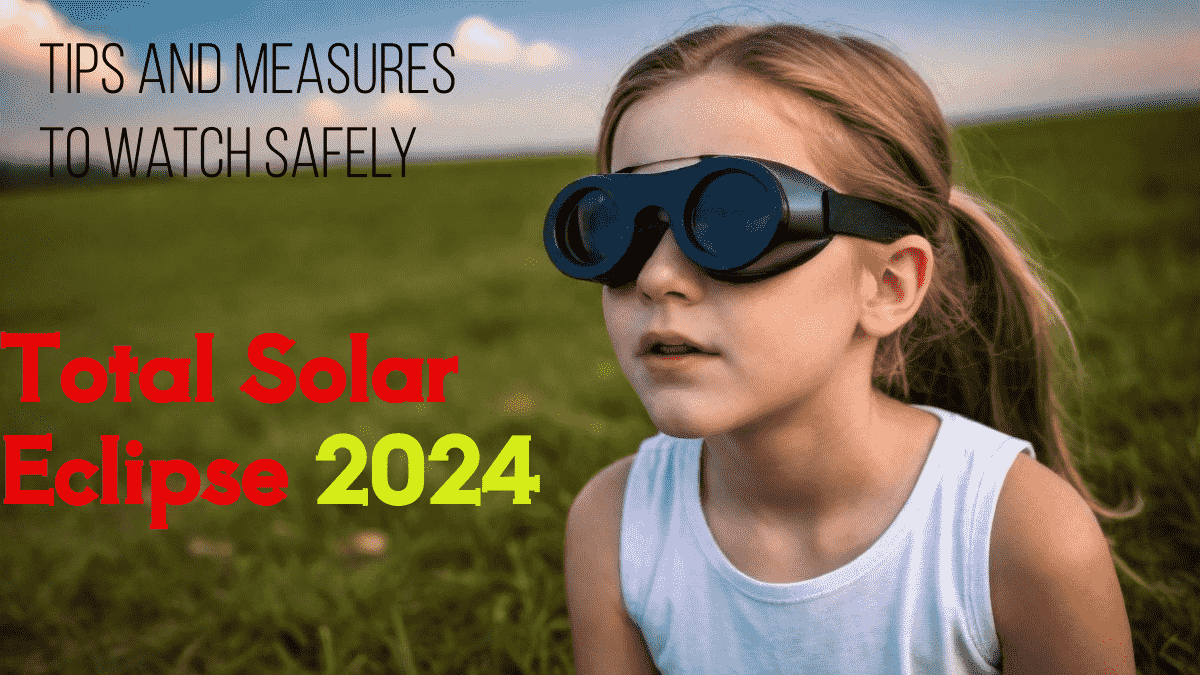As per NASA, on April 8, 2024, a total solar eclipse will cross North America, passing over Mexico, the United States, and Canada.
Get ready for a celestial spectacle! The Solar Eclipse of 2024, happening on April 8th, promises to be a once-in-a-lifetime experience for skywatchers across North America. But with so much information floating around, you might be wondering: Where can I see it? When does it happen? Most importantly, how can I do it safely? Don’t worry, this guide has you covered!
Witnessing 2024 Total Solar Eclipse: Where the Magic Happens
The most awe-inspiring part of the eclipse, known as totality, occurs when the moon completely covers the sun. During this brief period, lasting just a few minutes, the sky will darken dramatically, and the sun’s corona, its outermost atmosphere, will become visible.
If you crave this unforgettable experience, you’ll need to be positioned within the path of totality. This narrow band stretches from Mexico, through the United States, and into Canada. Here’s a breakdown of some key cities along the path:
Mexico: Mazatlán, Durango, Torreón
United States (West to East): Mazatlán, TX; Dallas, TX; Little Rock, AR; Cape Girardeau, MO; Carbondale, IL; Indianapolis, IN; Dayton, OH; Cleveland, OH; Erie, PA; Rochester, NY; Burlington, VT; Portland, ME
Canada: Windsor, ON; Toronto, ON; Ottawa, ON; Montreal, QC; Fredericton, NB; Charlottetown, PE; Sydney, NS
Planning Your Eclipse Adventure: Now that you know where to go, let’s plan your viewing experience! Here are some tips for different locations:
Within the Path of Totality: Aim for a location with a clear view of the western horizon, where the eclipse will begin. Open fields, parks, or rooftops are ideal.
Outside the Path of Totality: You’ll still witness a partial eclipse, but the sun won’t be completely covered. Find a high vantage point with minimal obstructions.
Timings: The exact timing of the eclipse will vary depending on your location. To pinpoint the start, peak (totality), and end times for your city, head over to NASA.
Safety First: Protecting Your Eyes
Never look directly at the sun, even during a partial eclipse! The sun’s intense light can permanently damage your eyesight. Here’s how to view the eclipse safely:
Specialized Eclipse Glasses: These glasses have special filters that block harmful solar radiation while allowing you to see the eclipse’s details. Look for glasses that meet the ISO 12312-2 international safety standard.
Solar Telescopes with Safe Filters: These are ideal for serious astronomy enthusiasts. Ensure the telescope has certified solar filters attached.
Beware of Fakes! Protecting Yourself from Scams
Unfortunately, with a major event like this, scammers may try to sell fake or unsafe eclipse glasses. Here’s how to identify the real deal:
Look for the ISO Certification: Always choose glasses with the ISO 12312-2 certification label.
Inspect the Filters: The filters should be a dark, uniform shade and block all sunlight when held up to a bright light source.
Purchase from Reputable Sources: Buy your glasses from established science stores, astronomy clubs, or reputable online retailers specializing in eclipse gear.
Beyond the Glasses: Additional Precautions
Never look through a camera, binoculars, or telescope without a proper solar filter attached.
Don’t rely on sunglasses, homemade filters, or regular eyeglasses. These offer no protection against solar radiation.
Supervise children closely during the eclipse.
QUICK FACTS
- The next total solar eclipse visible from the contiguous United States won’t be until August 23, 2044, so make the most of this one!
- A total solar eclipse offers a rare glimpse of the Sun’s corona, its usually hidden outer atmosphere.
- During totality, the brief period of darkness during a total eclipse, it’s safe to remove your special eclipse glasses to witness this amazing phenomenon. This is the only time during a solar eclipse that this is safe!
- Get ready for some confused critters! Solar eclipses can trick wildlife into thinking it’s nighttime, causing some nocturnal animals to wake up and some daytime animals to head to bed.
Safety First!
Looking directly at the Sun is dangerous, except during the short period of totality in a total eclipse. That’s when the Moon completely blocks the Sun’s bright light. To protect your eyes, use specialized solar filters whenever observing the Sun.
Never use a camera, binoculars, or telescope to look at the Sun without a proper solar filter attached directly to the front lens. Doing so can cause permanent eye damage in an instant.
During the partial phases of a solar eclipse, which occur before and after totality, it’s crucial to use safe solar viewing equipment. This includes certified eclipse glasses or handheld solar viewers. These filters dramatically reduce the Sun’s brightness to safe eye levels.
You can also use an indirect viewing method like a pinhole projector for a fun and safe alternative. This creates a projected image of the eclipse on a surface, allowing you to enjoy the phenomenon without looking directly at the Sun.
Frequently Asked Questions (FAQs):
Can I see the eclipse if I’m not in the path of totality?
Yes! You’ll witness a partial eclipse, where the moon partially covers the sun.
What will I see during a partial eclipse?
The sun will appear crescent-shaped, and the sky may dim slightly.
Do I need special glasses to see a partial eclipse?
While not strictly necessary, eclipse glasses can enhance your viewing experience, allowing you to see the sun’s shape more clearly.
What if it’s cloudy on eclipse day?
Don’t despair! Many online platforms will be streaming the eclipse live from clear viewing locations.
Are there any online resources to track the eclipse?
Read More >>https://trenditweetz.com/lions-vs-49ers/
Watching Live The Thrilling Detroit Lions vs 49ers Game: Best Options To Choose






